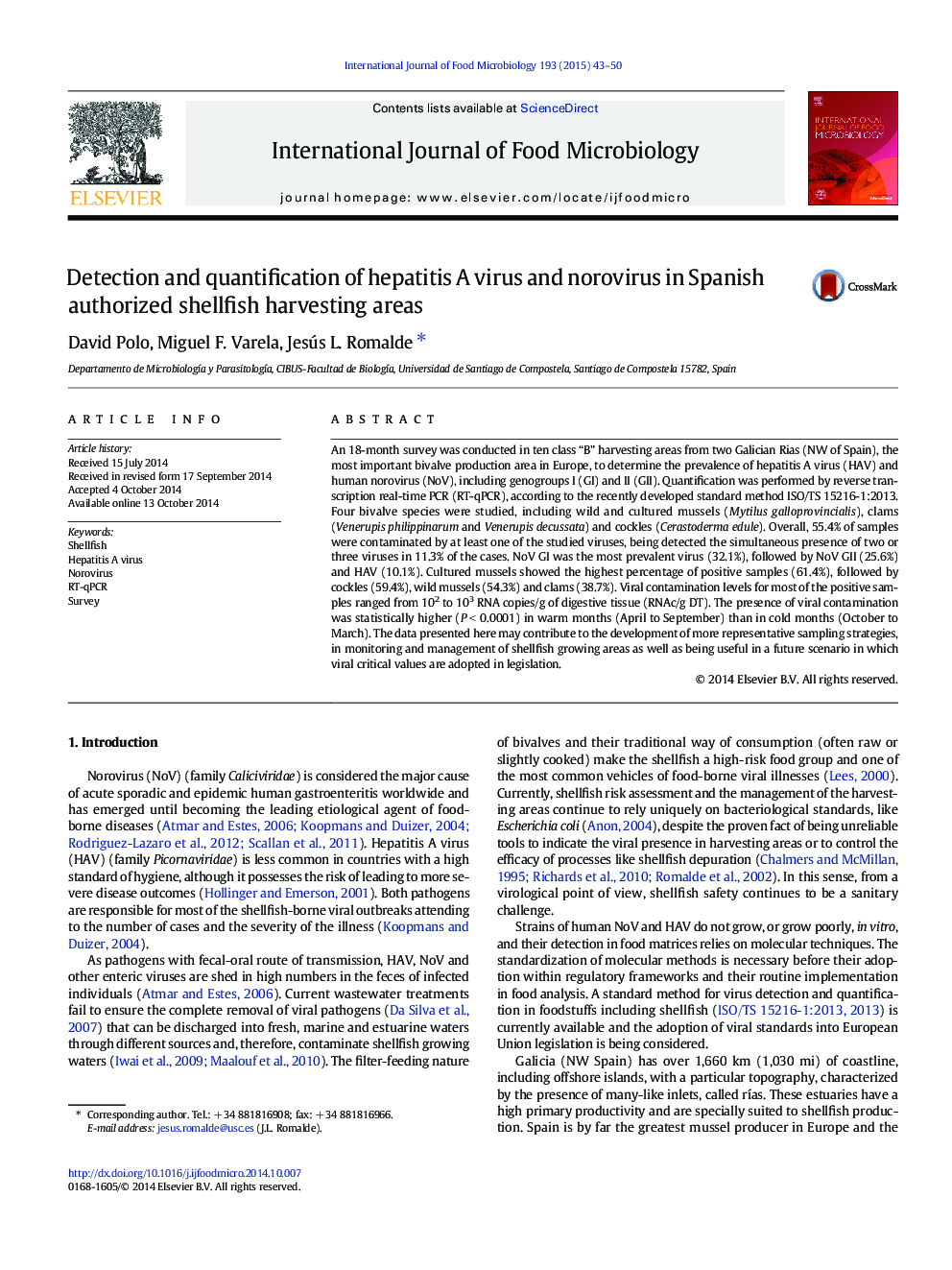| کد مقاله | کد نشریه | سال انتشار | مقاله انگلیسی | نسخه تمام متن |
|---|---|---|---|---|
| 4366748 | 1616590 | 2015 | 8 صفحه PDF | دانلود رایگان |

• Quantification data for HAV and NoV in shellfish harvested areas are provided.
• An overall high viral prevalence (55.4%) was observed.
• Average viral levels ranged between 102 and 103 RNA copies/g DT.
• NoV GI was the most frequently detected virus, followed by NoV GII and HAV.
• Atypical viral peaks in warmer months were observed.
An 18-month survey was conducted in ten class “B” harvesting areas from two Galician Rias (NW of Spain), the most important bivalve production area in Europe, to determine the prevalence of hepatitis A virus (HAV) and human norovirus (NoV), including genogroups I (GI) and II (GII). Quantification was performed by reverse transcription real-time PCR (RT-qPCR), according to the recently developed standard method ISO/TS 15216-1:2013. Four bivalve species were studied, including wild and cultured mussels (Mytilus galloprovincialis), clams (Venerupis philippinarum and Venerupis decussata) and cockles (Cerastoderma edule). Overall, 55.4% of samples were contaminated by at least one of the studied viruses, being detected the simultaneous presence of two or three viruses in 11.3% of the cases. NoV GI was the most prevalent virus (32.1%), followed by NoV GII (25.6%) and HAV (10.1%). Cultured mussels showed the highest percentage of positive samples (61.4%), followed by cockles (59.4%), wild mussels (54.3%) and clams (38.7%). Viral contamination levels for most of the positive samples ranged from 102 to 103 RNA copies/g of digestive tissue (RNAc/g DT). The presence of viral contamination was statistically higher (P < 0.0001) in warm months (April to September) than in cold months (October to March). The data presented here may contribute to the development of more representative sampling strategies, in monitoring and management of shellfish growing areas as well as being useful in a future scenario in which viral critical values are adopted in legislation.
Journal: International Journal of Food Microbiology - Volume 193, 16 January 2015, Pages 43–50